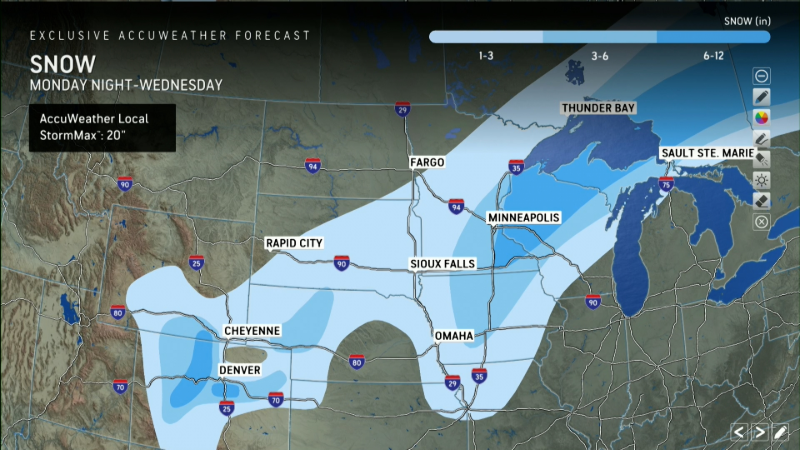'Emergency travel only': Blizzard forecast to blast millions in central US

A sprawling, powerful March storm that's bringing the threat of tornadoes to the South is also spreading heavy snow and blizzard conditions to portions of the north-central U.S. on Tuesday and into Wednesday.
"Travel should be restricted to emergencies only," the National Weather Service in Iowa warned. "If you must travel,have a winter survival kit with you. If you get stranded, stay with your vehicle."
The two main trouble spots for heavy snow with the storm will be in parts of Colorado and the upper Midwest. During the day Tuesday, the swath of heaviest snow will expand and shift from northeastern Colorado to South Dakota, Iowa, and central and western Minnesota, AccuWeather said.
Blizzard warnings are in effect in six states, with some six million people impacted, the weather service said.
How much snow will fall?
"Some of the higher elevations of the central Rockies could see snow accumulations of 1 to 2 feet with this system," the National Weather Service said. "Additionally, a swath of 4 to 8 inches along with very strong winds will set up from the central High Plains to the upper Midwest resulting in a vast area with blizzard conditions.
"Local maximum snow totals may approach 1 foot."
"Where it manages to snow hard during the day, it can still pile up and make roads slippery," AccuWeather senior meteorologist Dan Pydynowski said.
What is a blizzard?
The National Weather Service defines a blizzard as blowing or falling snow with winds of at least 35 mph, resulting in reduced visibility to a quarter of a mile or less for three hours or more.
If there is snow already on the ground and high winds are blowing it around and creating low visibility as a result, that is called a ground blizzard.
How strong will the winds be?
"Gusts could hit up to 70 mph in the central Plains beginning Tuesday, and the upper Midwest might see gusts over 50 or 60 mph starting Tuesday night," noted Weather.com meteorologist Sara Tonks in an online forecast. "Travel conditions will likely be extremely dangerous where the snow and strong winds overlap. Some broken tree limbs and power outages are possible, as well."
How to drive in a blizzard
Persons should delay all travel if possible, the weather service said. "If travel is absolutely necessary, drive with extreme caution and be prepared for sudden changes in visibility. Leave plenty of room between you and the motorist ahead of you, and allow extra time to reach your destination."
"Avoid sudden braking or acceleration, and be especially cautious on hills or when making turns. Make sure your car is winterized and in good working order."
Where will it snow Wednesday?
On Wednesday, the heaviest stripe of snow will likely extend from eastern Minnesota and central and northeastern Wisconsin to northern Michigan, AccuWeather said.